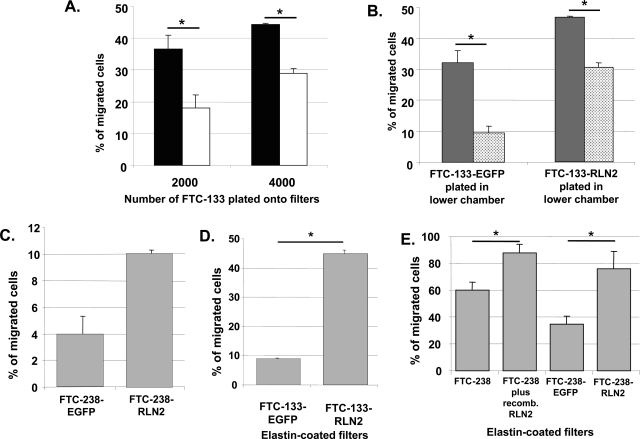Figure 7-6913.
A: In a two-chambered motility assay, untransfected FTC-133 exposed to 100 ng/ml of recombinant RLN2 (black column) showed significantly increased motility when compared with untreated FTC-133 (white column) as determined by the number of cells that had traversed the 8-μm filter pores. B: Enhanced motility was also observed with FTC-133-RLN2 transfectants (gray column) as compared to FTC-133-EGFP controls (dotted column). A paracrine motility-promoting effect was observed for the FTC-133-RLN2 (gray column) and FTC-133-EGFP clones (dotted column) when relaxin-secreting FTC-133-RLN2 transfectants (5 × 104 cells) were additionally plated into the lower chamber. This paracrine effect was absent when FTC-133-EGFP (5 × 104) cells were plated in the lower chamber. C: FTC-238-RLN2 transfectants also showed enhanced motility as compared to FTC-238-EGFP controls. D: Migration assays through elastin-coated filters demonstrated an ∼4.5-fold enhanced migration of the FTC-133-RLN2 transfectants as compared to the FTC-133-EGFP controls indicating relaxin-mediated enhanced elastinolytic activity in these FTC-133-RLN2 transfectants. E: RLN2 also increased the elastinolytic activity in FTC-238 as shown for FTC-238 treated with recombinant RLN2 and for stable FTC-238-RLN2 transfectants.

